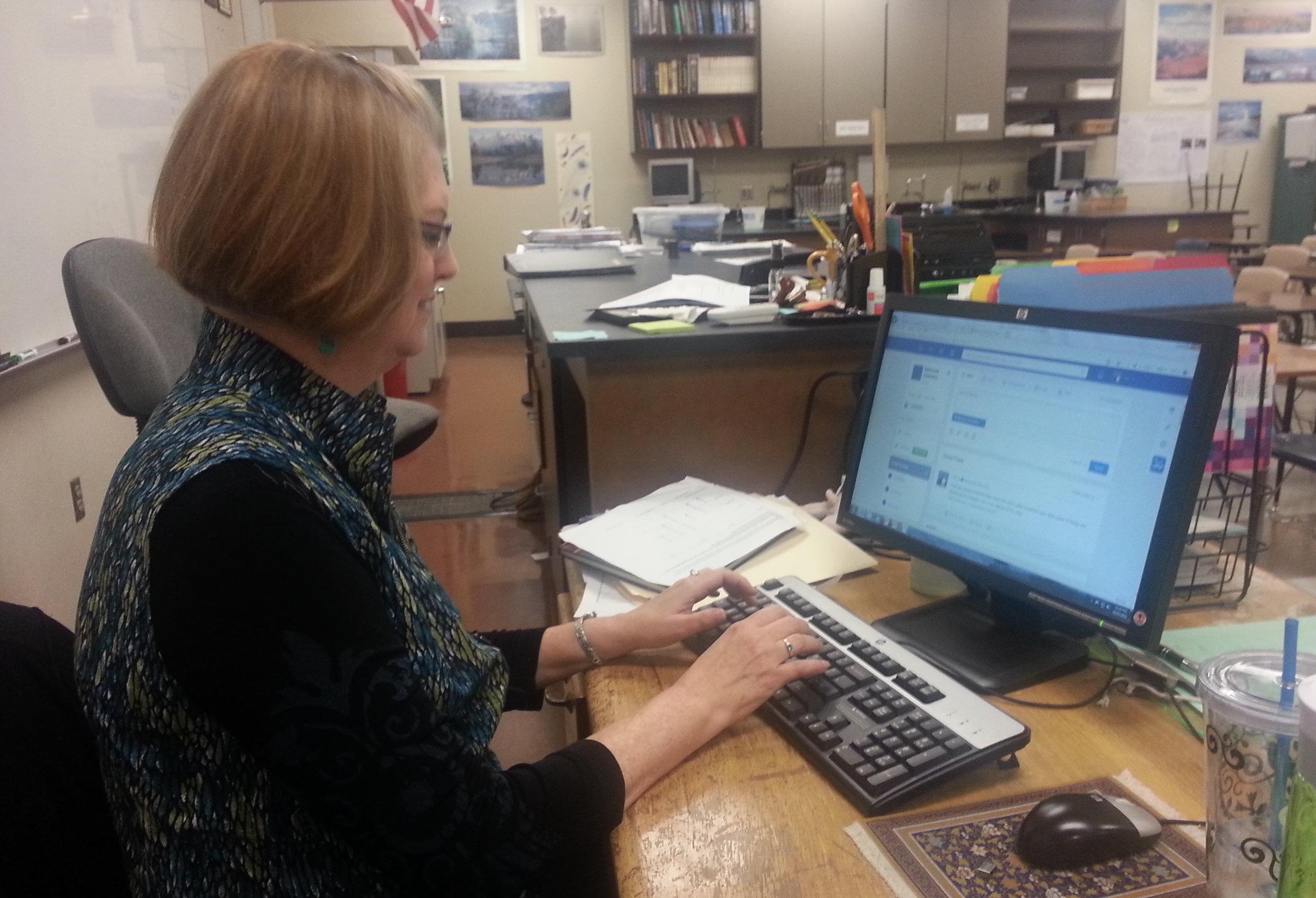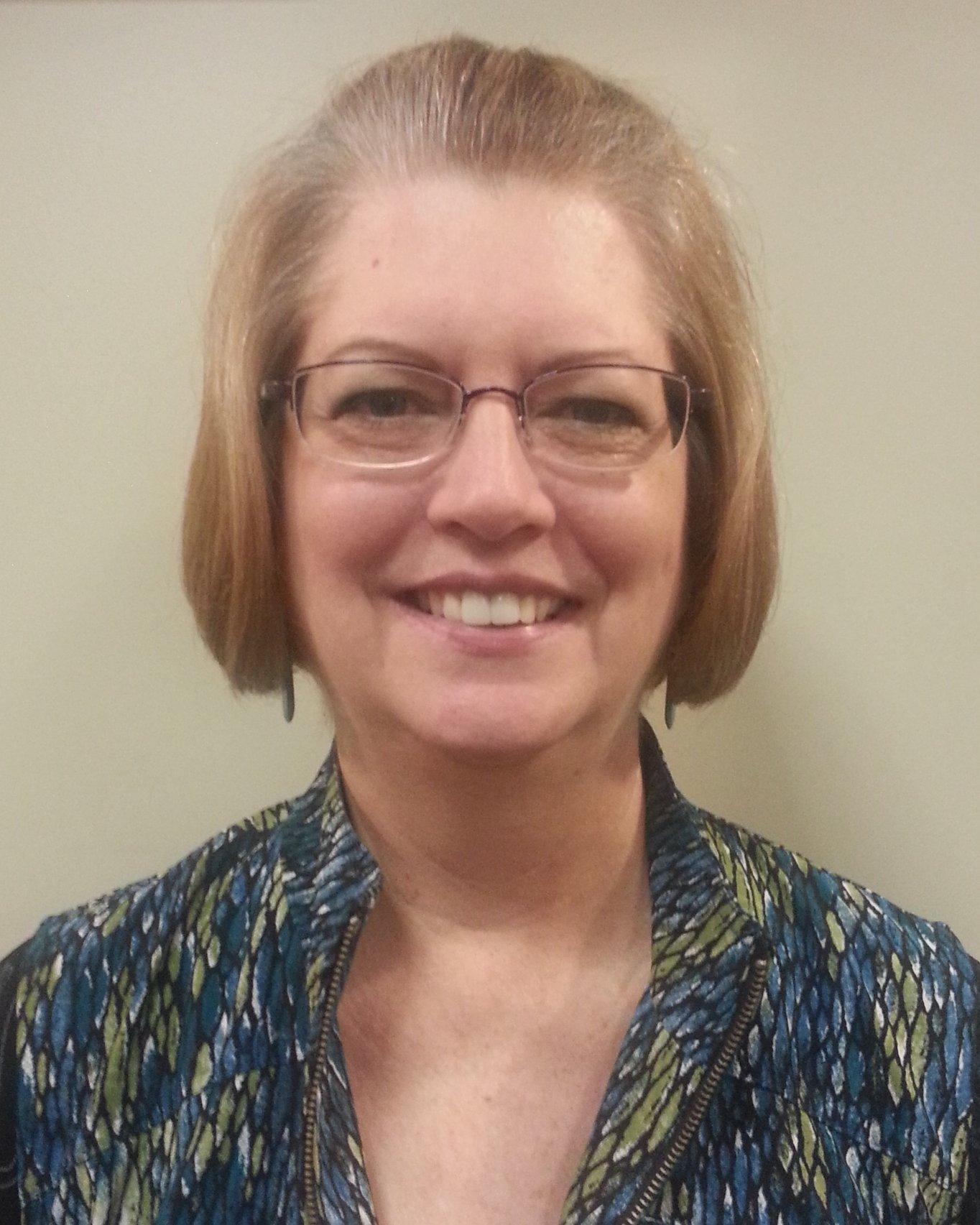Teachers use Edmodo software to enhance communication
Sally Hutsell updates a homework assignment for her Advanced Chemistry class on Edmodo.
October 24, 2013
Teachers have gradually begun bringing more technology into classrooms, and such is the case with Edmodo, a software application that allows teachers and students to share educational materials. Science teachers Jon Waggle and Sally Hutsell both have begun using Edmodo, which is available as a free iPhone and Android application as well as in website form.
“I use it to share the agenda and to make documents easily accessible,” Waggle said.
Hutsell resonated with Waggle’s statement.
“I use it for assignments, reminders, and to post worksheets,” Hutsell said. “Sometimes I use it to send out websites. For example, there was a video I showed on Wednesday and I had students absent, so I posted the website for the video so they could go to the site and watch the video.”
Waggle detailed that he was exposed to the Edmodo application at a conference last year at the San Joaquin County Office of Education.
“The presenters said if you have a smartphone, laptop, or tablet take it out and join this account on Edmodo,” Waggle said.
Waggle also credited physics teacher Dean Reese with encouraging him to sign up.
“Mr. Reese was a big proponent of it, so I finally got around to it and it does make things easier,” Waggle said.
One advantage to Edmodo is that it does not take a lot of time for teachers to update it.
“I spend less than five minutes into updating Edmodo each day,” Waggle said.
“I don’t update it every day, it just depends on what I’m doing in class. If there’s a worksheet they didn’t finish, then I upload the file,” Hutsell said. “I’m probably spending at most 10-15 minutes max two to three times a week.”
Previously, Hutsell had to exert much more effort into sending out a message to all of her students.
“For example, in the past if you wanted to do all those things you would literally have to type in by hand every student’s email and send out a mass email,” Hutsell said. “This way, the students join your class kind of like if you friend somebody on Facebook.”
So far, both Waggle and Hutsell had positive comments about Edmodo.
“It’s very simple to use,” Waggle said. “For what I want it to do, it does it just fine.”
Hutsell especially liked that Edmodo allowed her to not have to answer the same question multiple times outside of school.
“I think the kids really like being able to get a hold of me easily, like if they have questions,” Hutsell said. “The nice thing about it is when they post on Edmodo, everybody sees it so if student B has the same question as student A, they can read my response so I do not have to respond multiple times.”
Edmodo has also helped teachers save on classroom resources.
“I don’t need to have extra copies made, so it saves resources and time,” Waggle said. “I can just tell students to go to Edmodo.”
Both teachers remained optimistic about the future of technology in classrooms.
“Technology is positive if it’s utilized effectively,” Waggle said. “For anything in teaching, it’s going to come down to the interaction between the student and teacher. If it’s a replacement of that, it’s a negative. If it’s a supplement, it’s a positive. I, view it as positive.”
Hutsell emphasized the positive benefits of bringing more technology into classrooms.
“I think we’ll see a lot more flipped classrooms, students are doing more at home while having more time to practice in class,” Hutsell said. “I’m hoping with the next generation science standards we’ll be seeing a lot more project-based, experiment-based, hands-on-based types of learning using probes and technology.”
Hutsell also acknowledged the financial necessities required to implement more technology.
“Of course, the biggest problem with that is having the finances to have the technology come into the classrooms,” Hutsell said.












